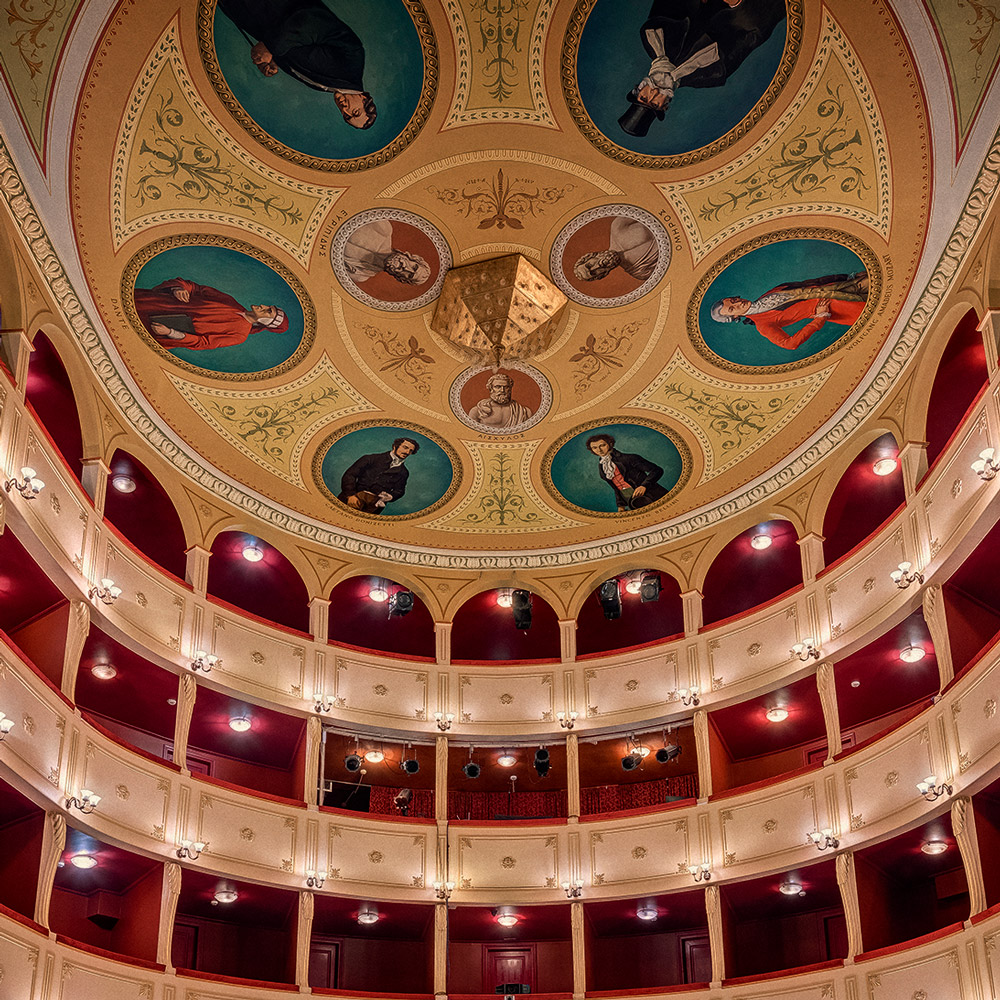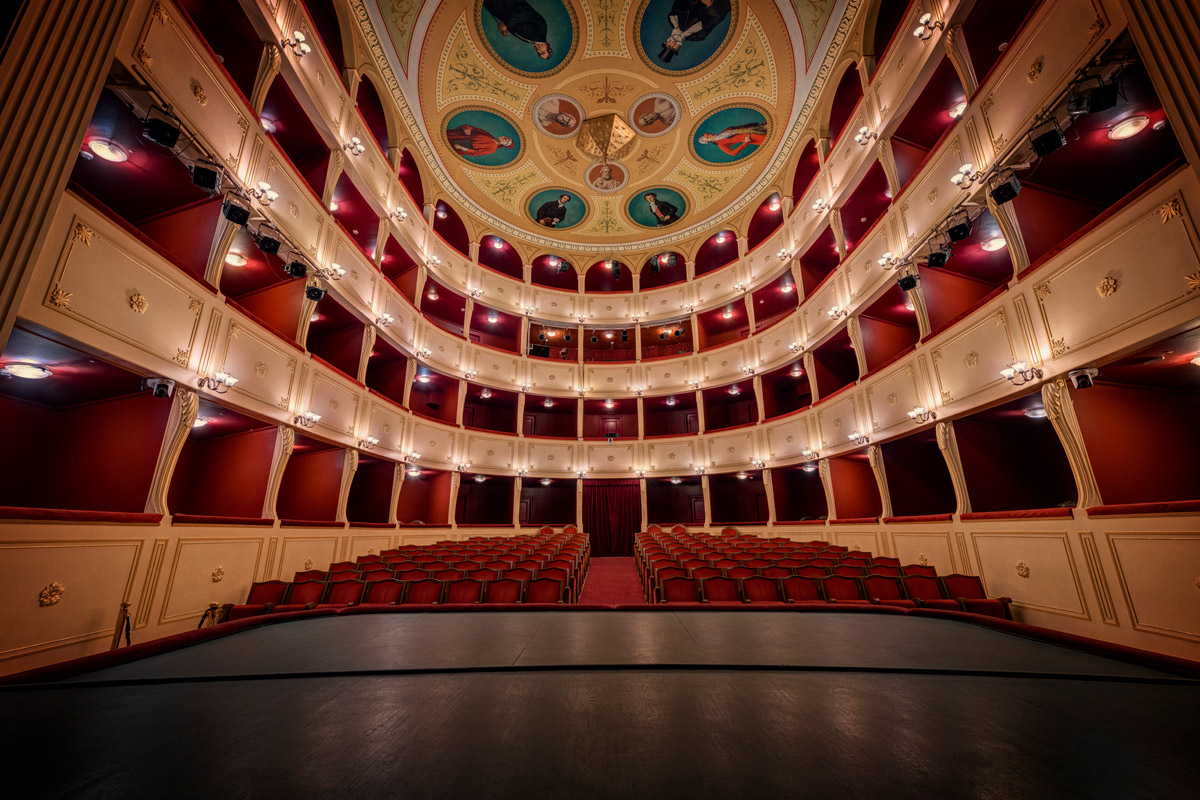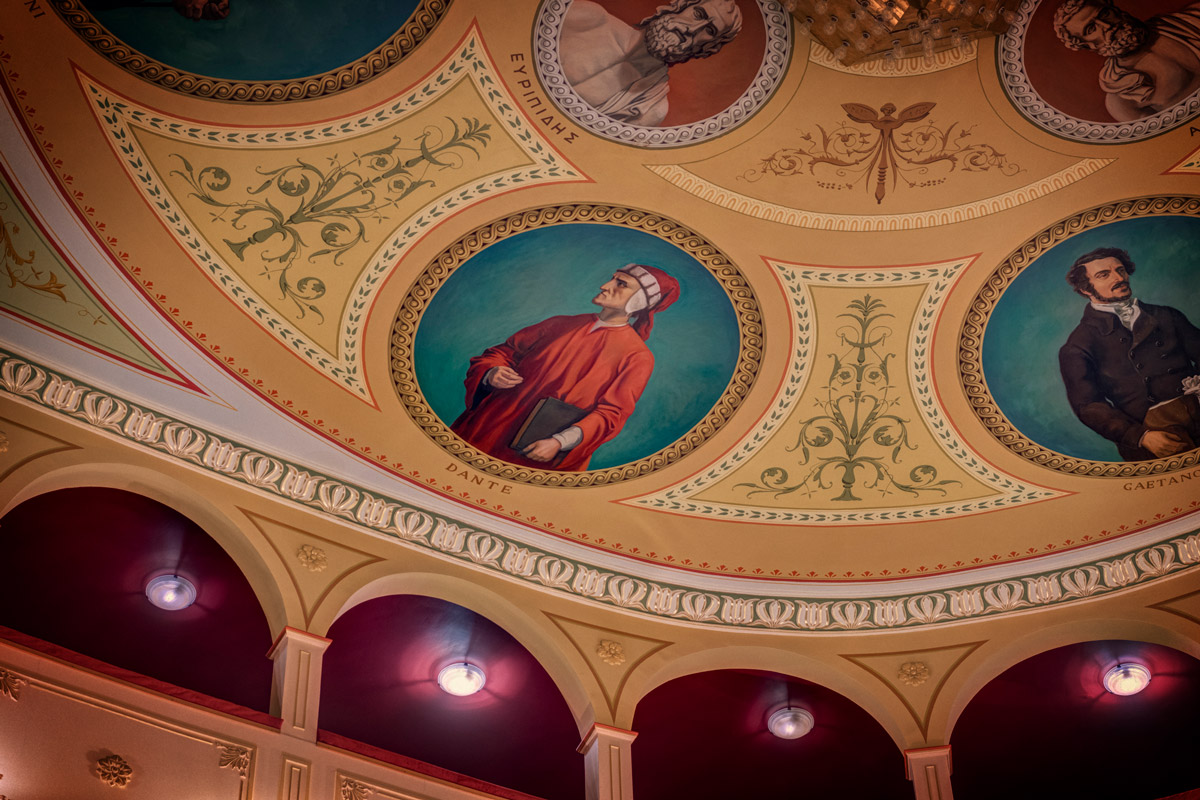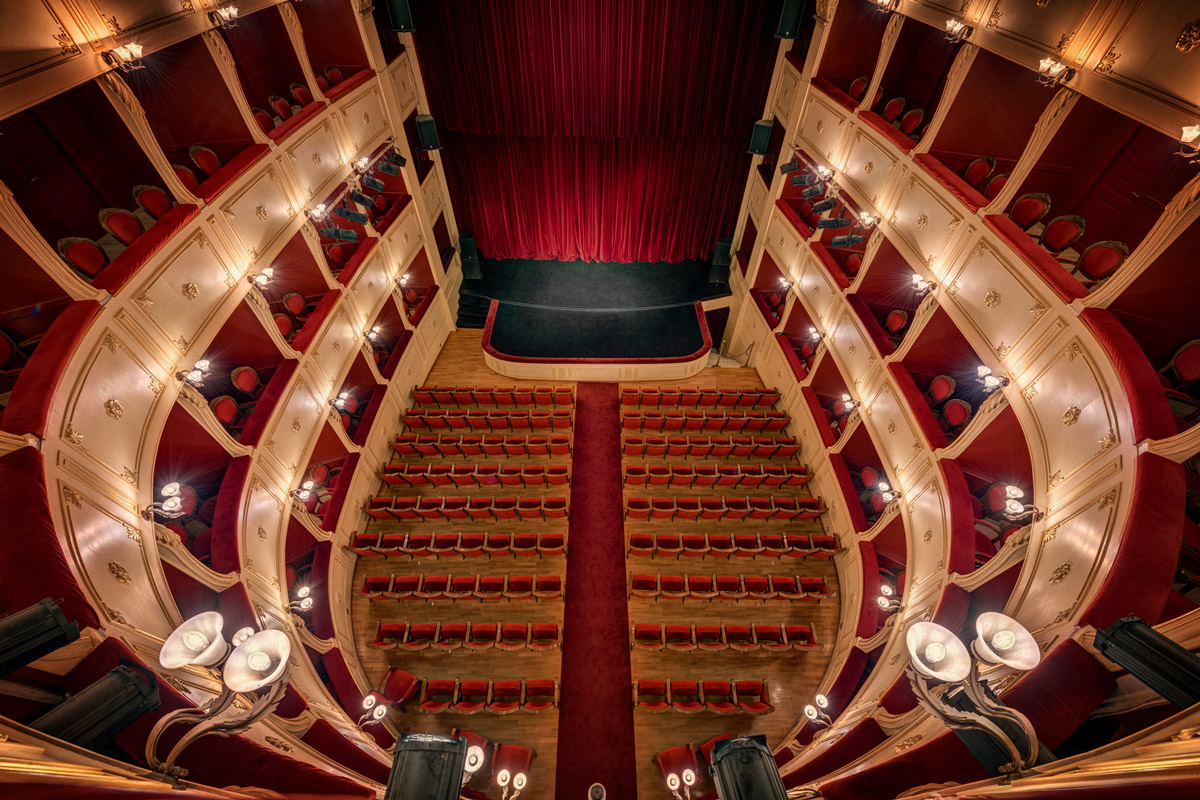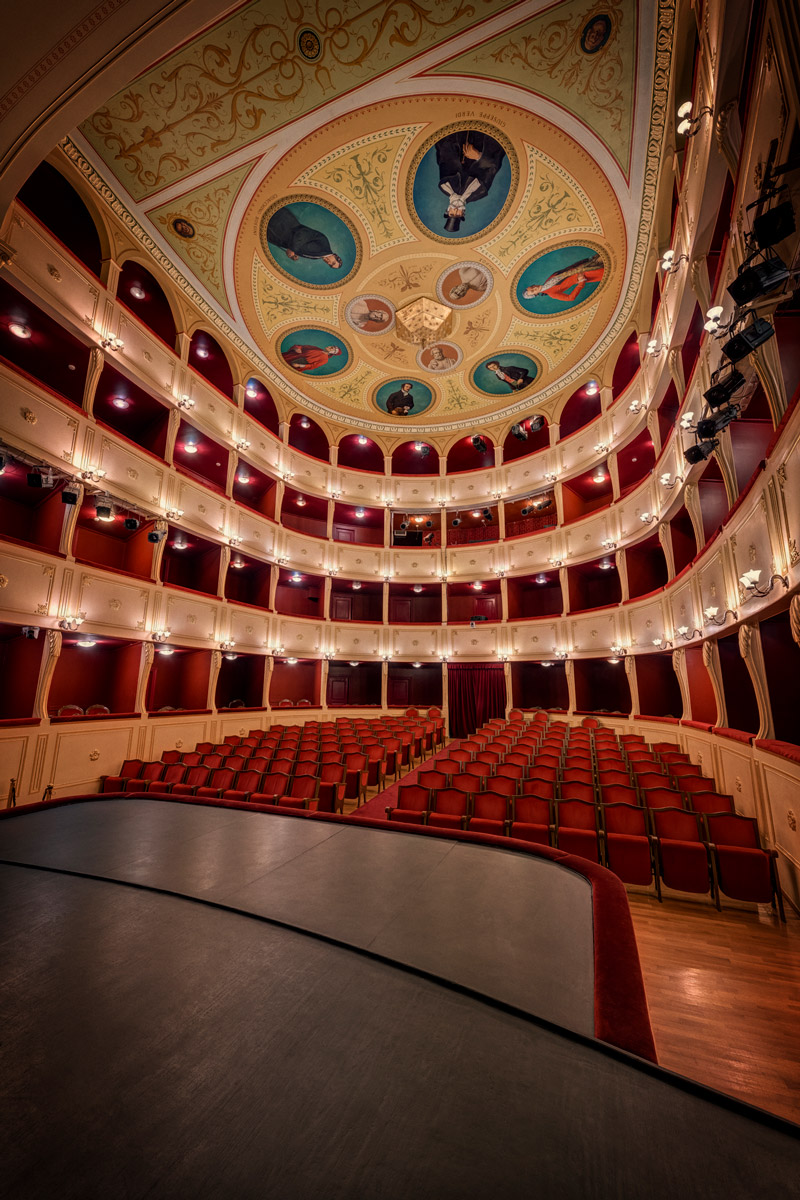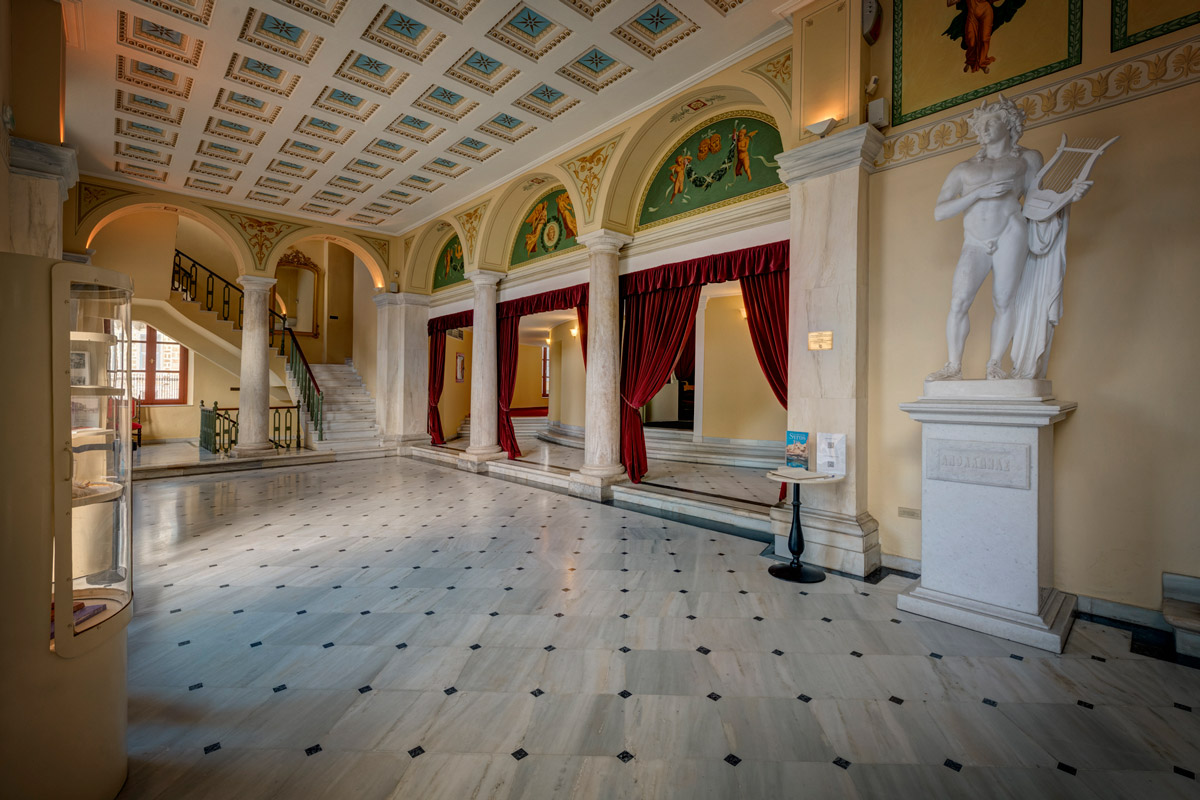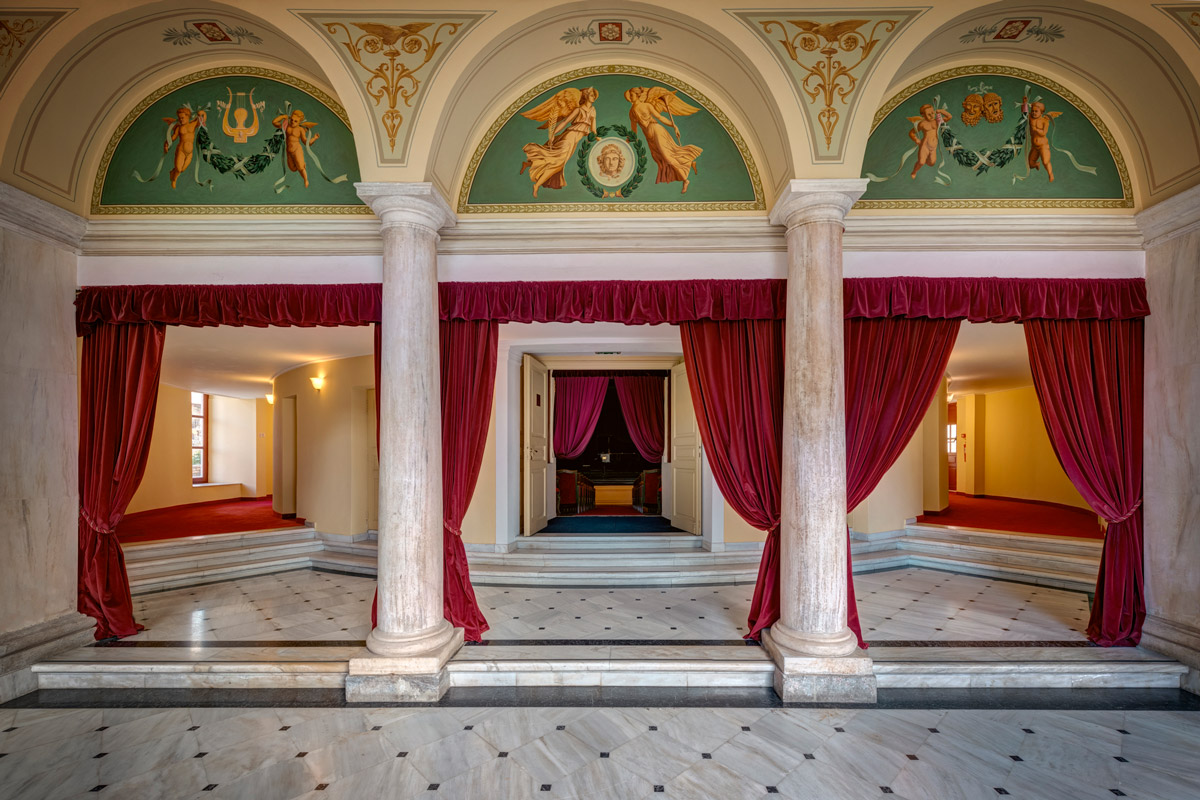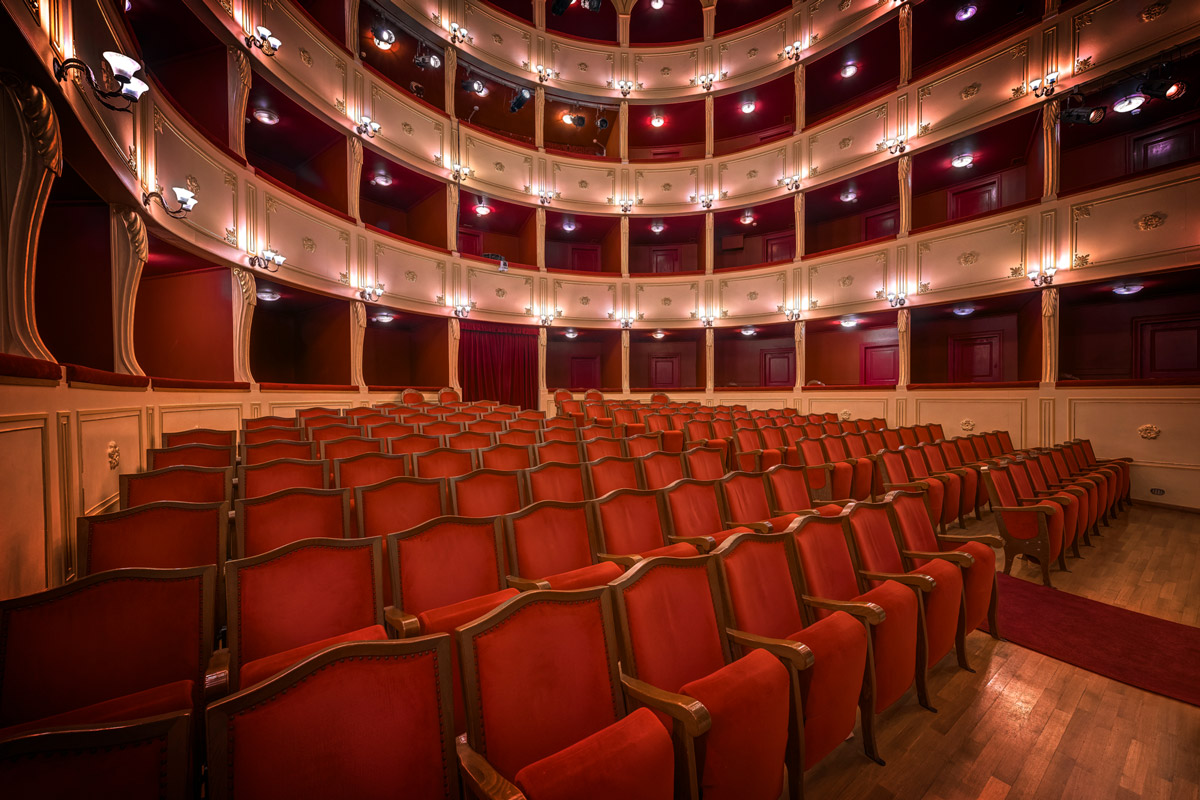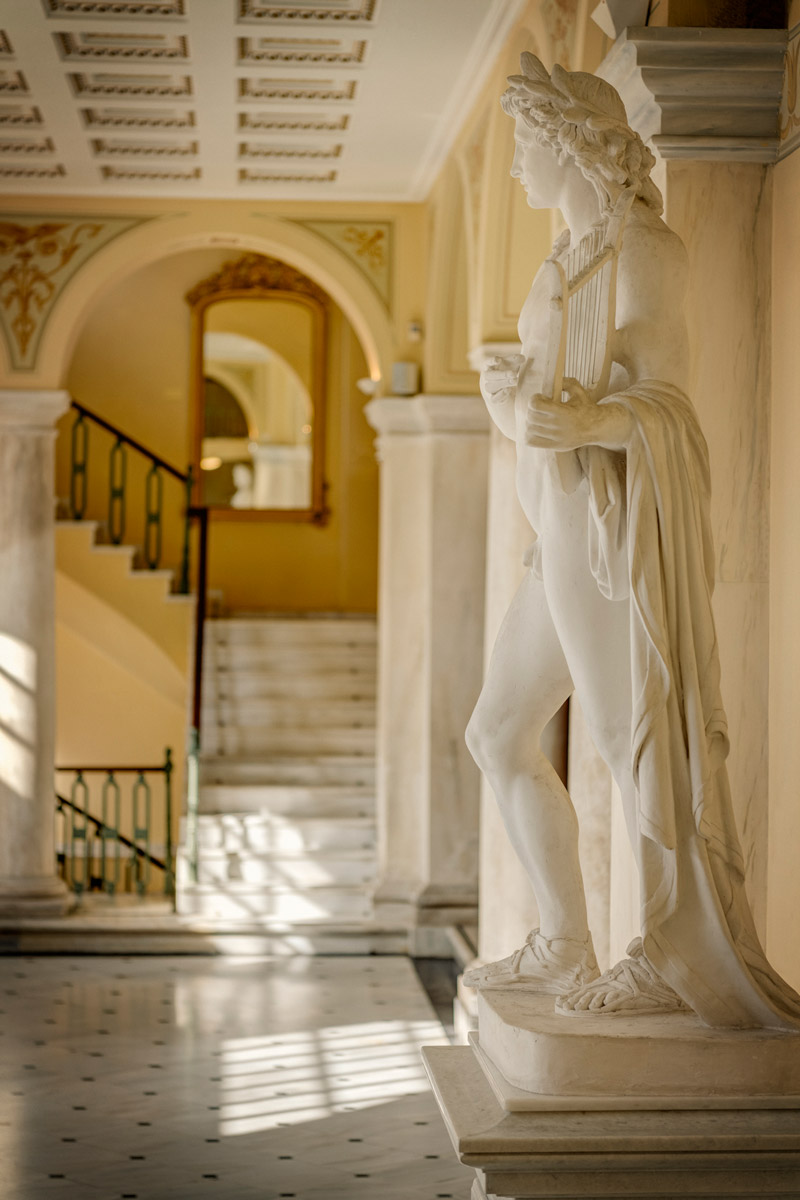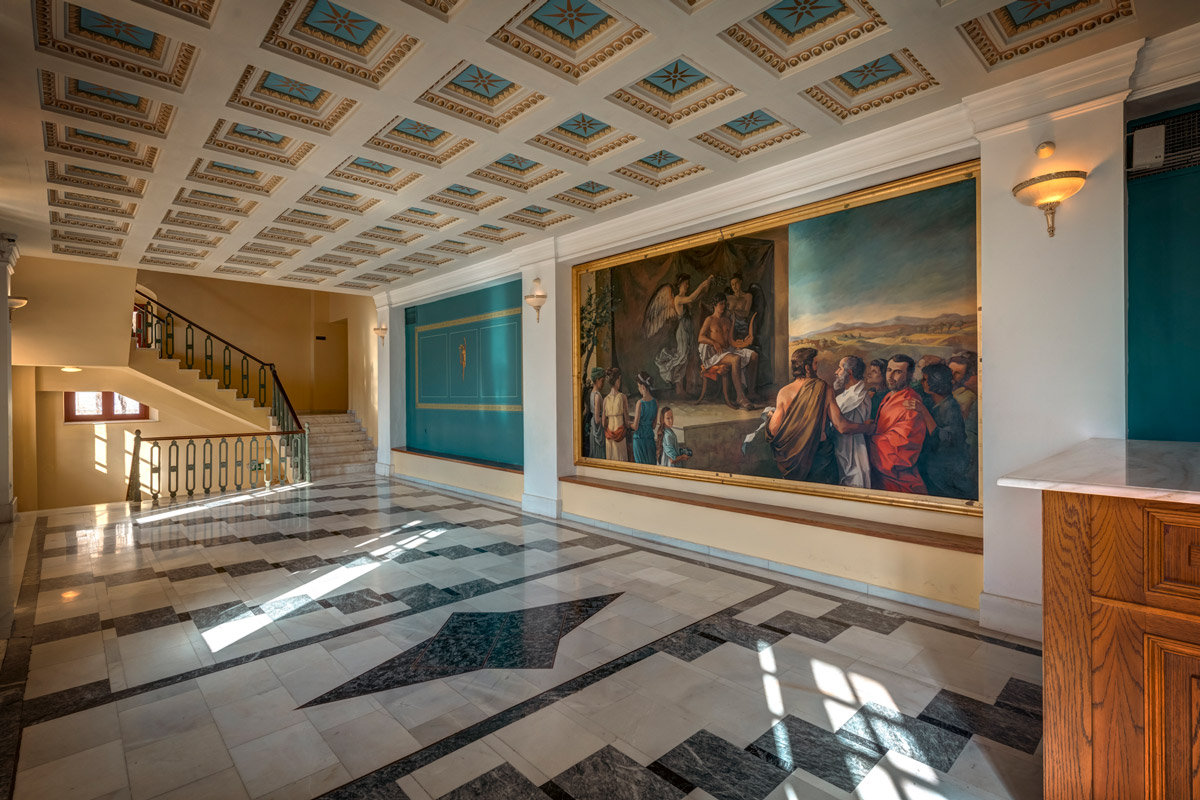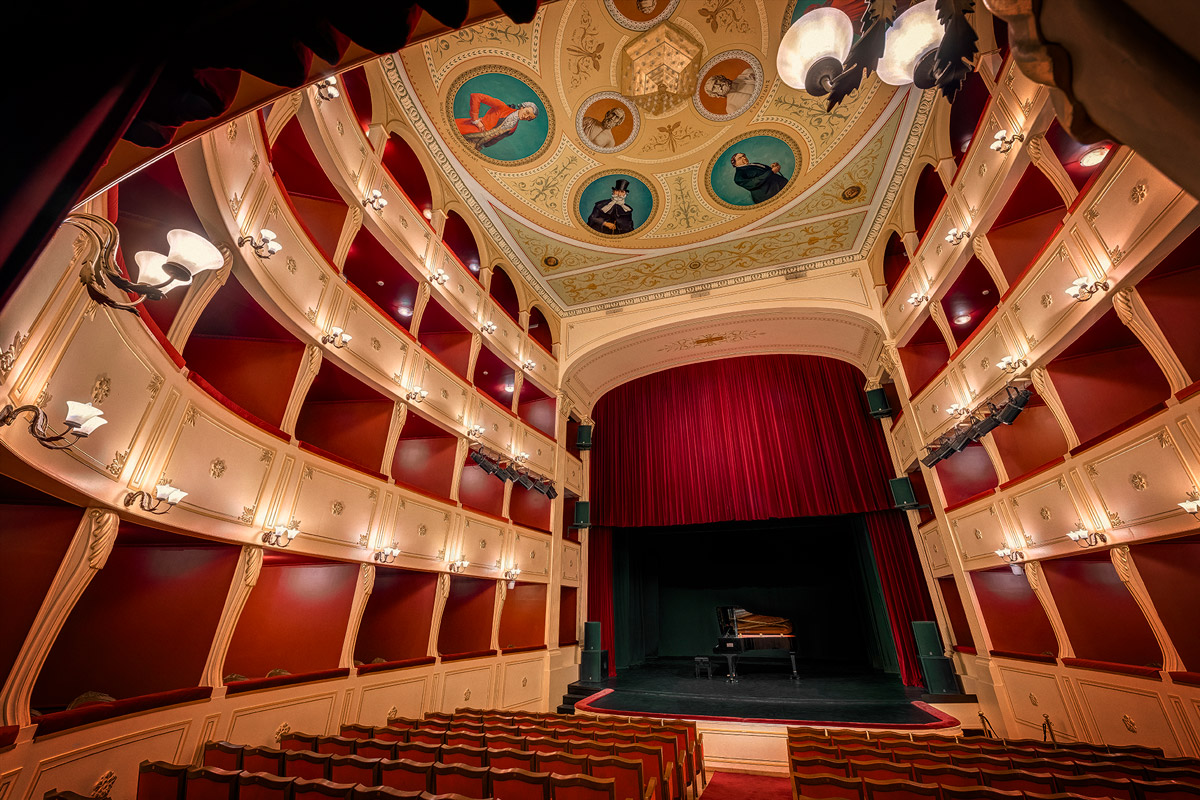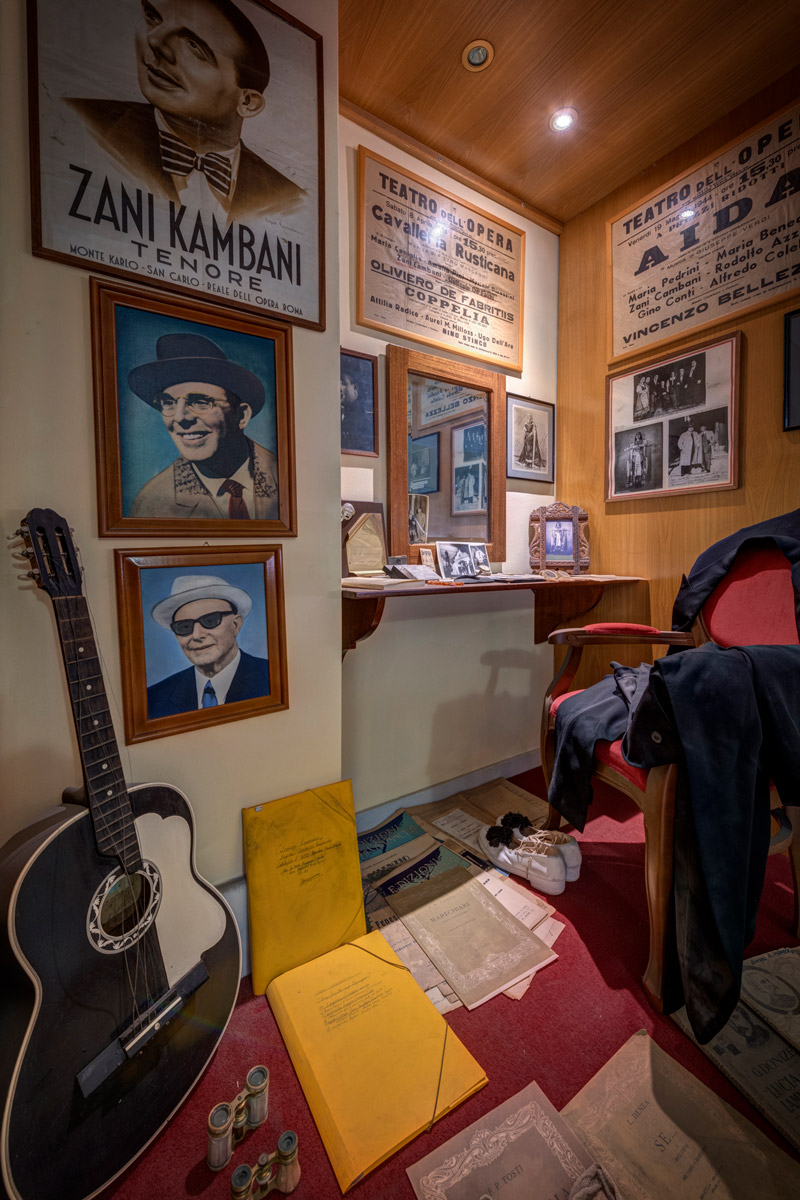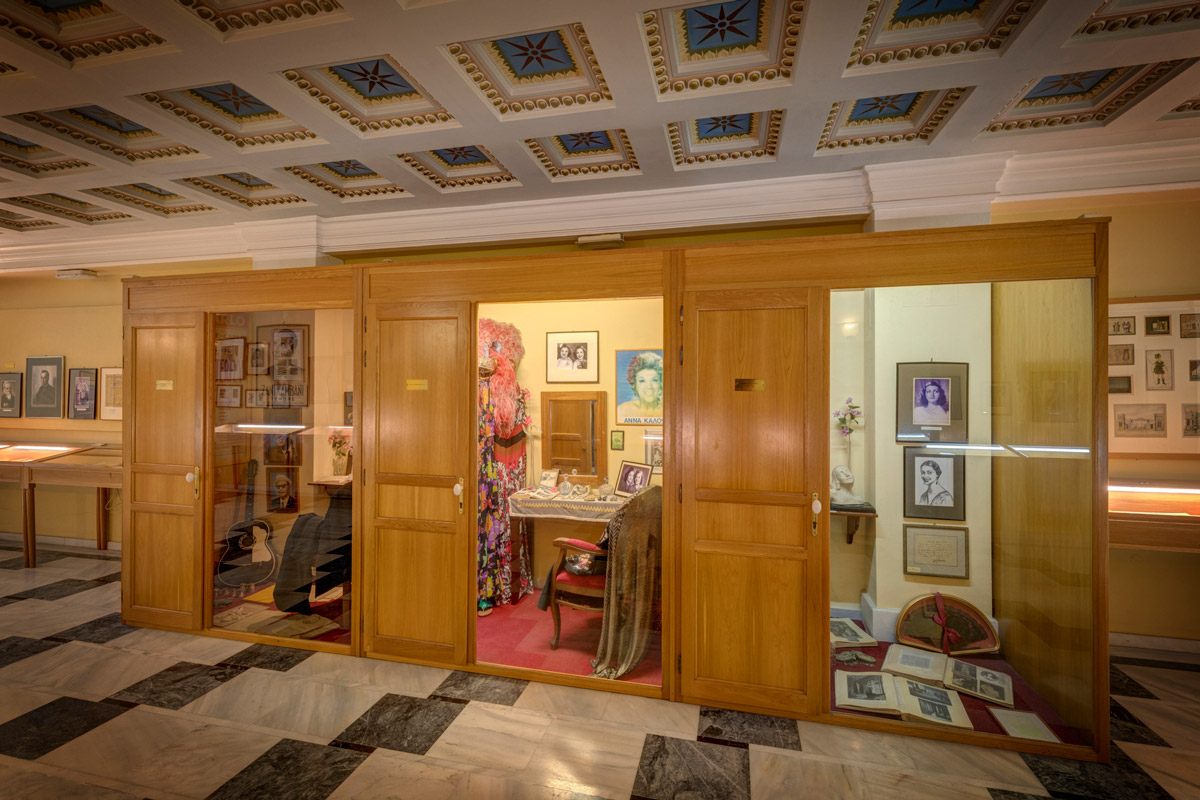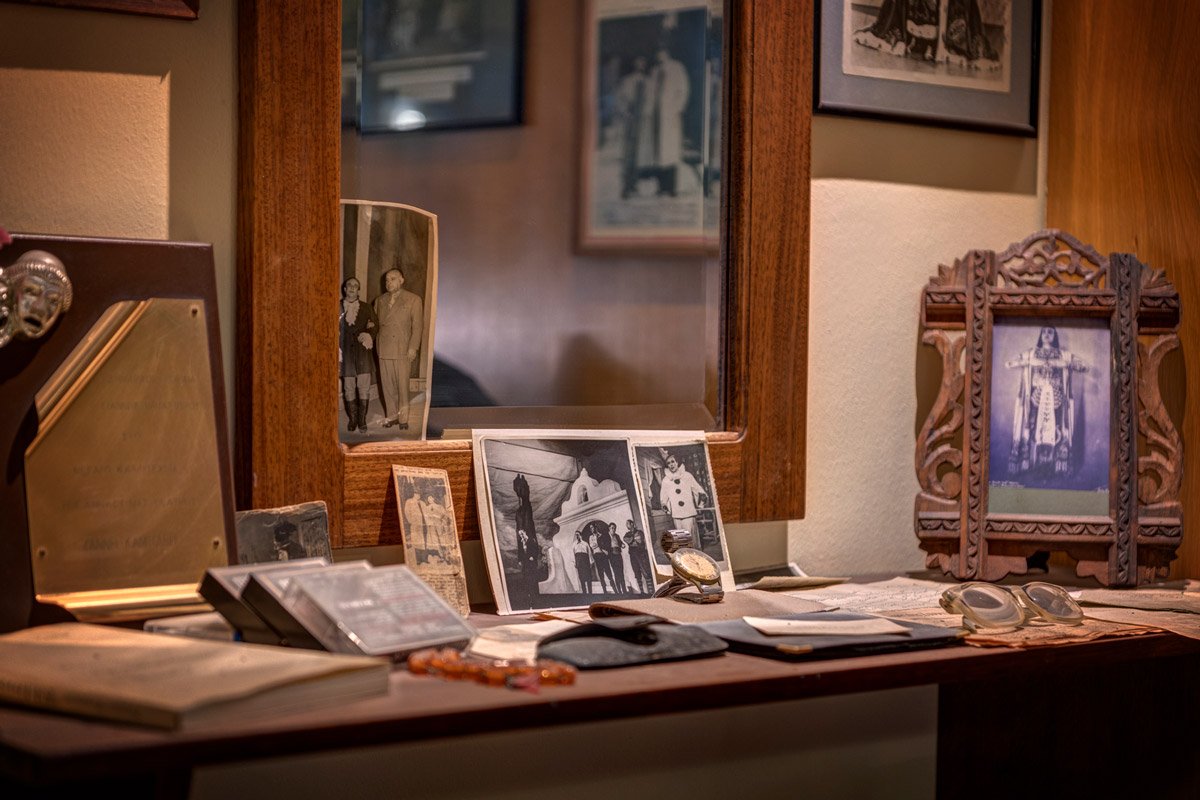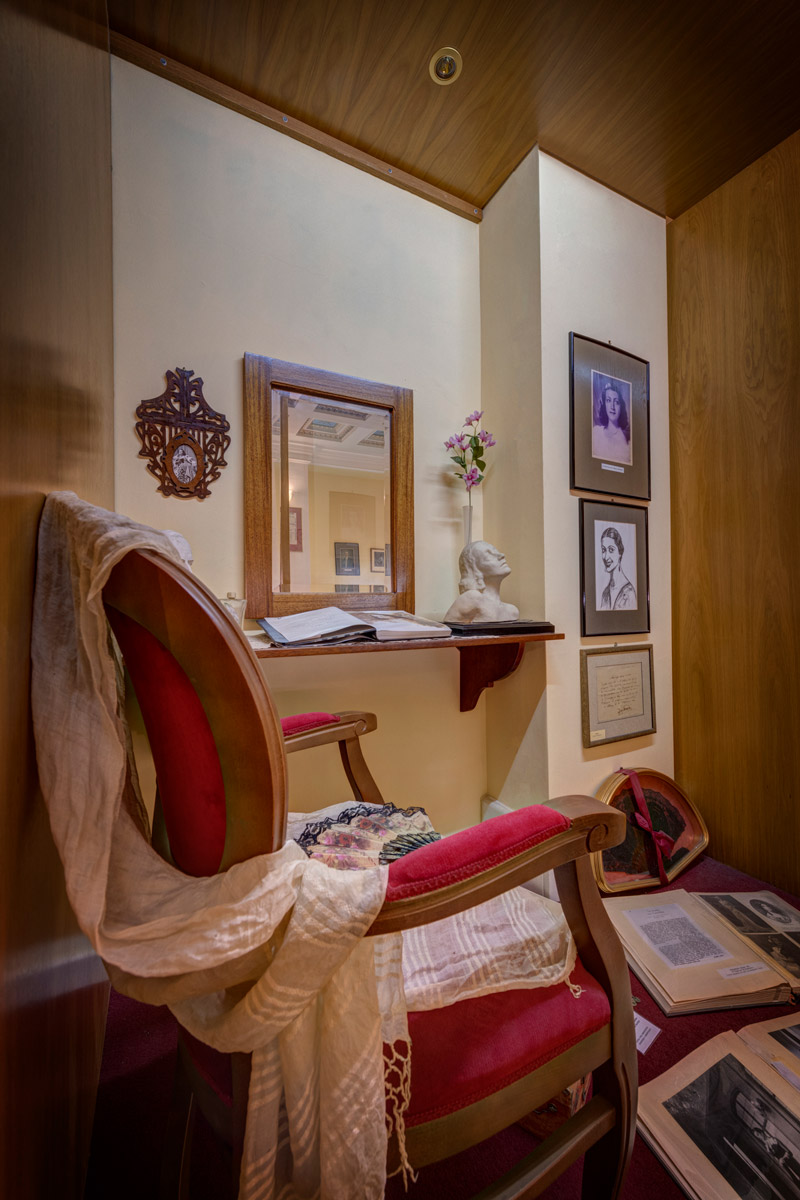Apollon Theater
Apollon Theater is the symbol
of Hermoupolis' cultural heritage.
The Apollon Theater is a symbol of Hermoupolis, inextricably linked to its history. The city, founded by refugees, was a social, economic and architectural miracle of the 19th century with remarkable cultural movement and creative refulgence.
Every year, the Apollon Theater hosts significant cultural events. Throughout the year, it accommodates theatrical performances, artistic events, as well as international festivals, including opera, music, and dance, with participation from both local and international artists.
The festivals that have been a dynamic presence in the Syros Culture program for many years and offer high-quality spectacles for lovers of opera, music, dance, and the arts, include the International Aegean Festival, the International Classical Music Festival of Cyclades, the Animasyros International Animation Festival, the Syros International Music Festival, the Syros Jazz Festival, the Choir Festival of Hermoupolis, the Guitar Festival, the Rebetiko Festival and more.
A small “memory” exhibition on the top floor of the theater hosts works by local and other artists, old posters and programs, manuscripts, theatrical publications, photographic material, and objects that played a significant role in the theater’s history.
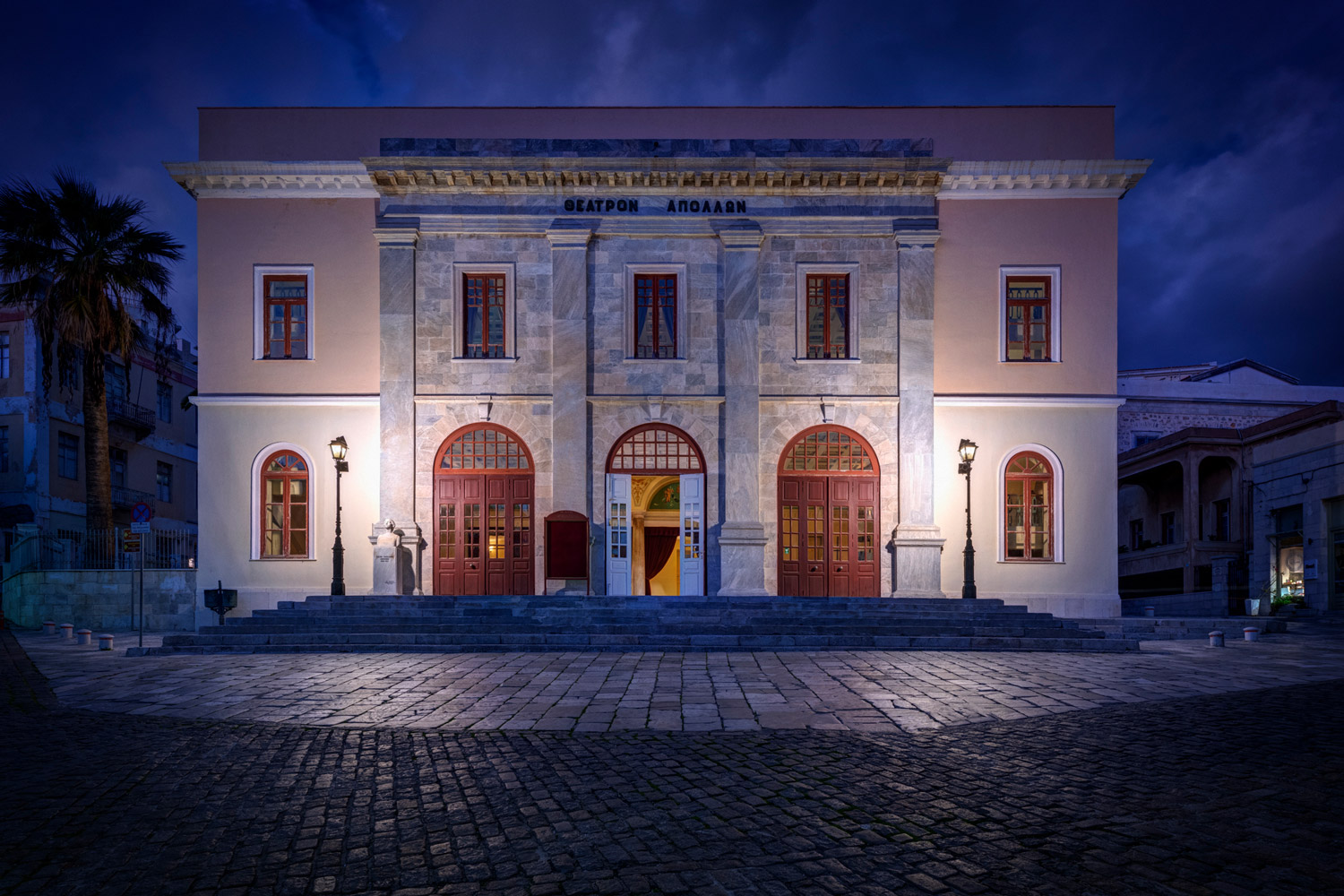
From birth to rebirth.
The profound need for a permanent home to accommodate the city’s continuing artistic activity that as early as 1828, was hosted in makeshift venues, such as timber warehouses, coffee shops and clubs, led the City Council to endorse the construction of the theater.
The building was constructed within two years (1862 – 1864), based on the designs of the Italian municipal architect Pietro Sambo. Its architecture follows at least four Italian theater standards: “La Scala” in Milan (1776), “Teatro San Carlo” of Naples (1816), the academic theater of “Castelfranco” (1745), and “Teatro della Pergola” of Florence (1755).
It was inaugurated on April 20, 1864, with the opera “Rigoletto” by G.Verdi, and three parallel opera performances: Donizetti’s “La Favorita”, Verdi’s “La Traviata” and “Ballo in maschera”.
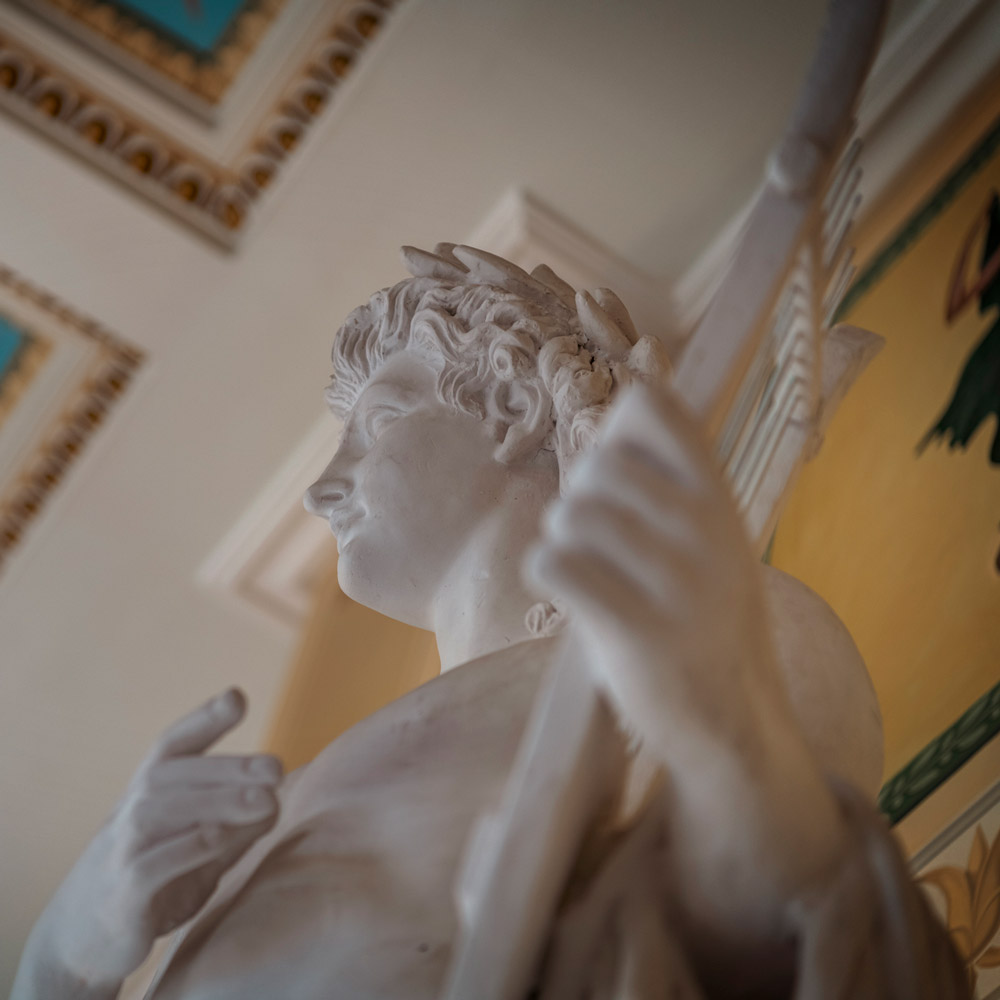
The Apollon Theater enjoyed years of heyday along the unique prosperity of the city of Hermoupolis. Over the years, distinguished artists and leading theater companies, from Greece and abroad, performed on its stage a variety of repertoire focusing largely on opera.
The theater remained in the spotlight, attracting the attention of famed performers even when the economic recession of the city had become noticeable, from the beginning of the 20th century until the interbellum.
The theater history of this period is documented in a valuable four- volume work by the poet and writer Manos Eleftheriou. During the occupation time, the theater was used by the Italian and later by the German guard as a cinema hall. After the liberation, it went on functioning mainly as such, operated by a local businessman, and occasionally hosting theater performances.
Its last inspired moment was the theater play “Shadow” by Dario Nicodemi, which was the farewell performance of the famous Greek actress Marika Kotopouli (1953). Shortly after, the theater closed down, as it deemed unsafe and unsuitable for performances.
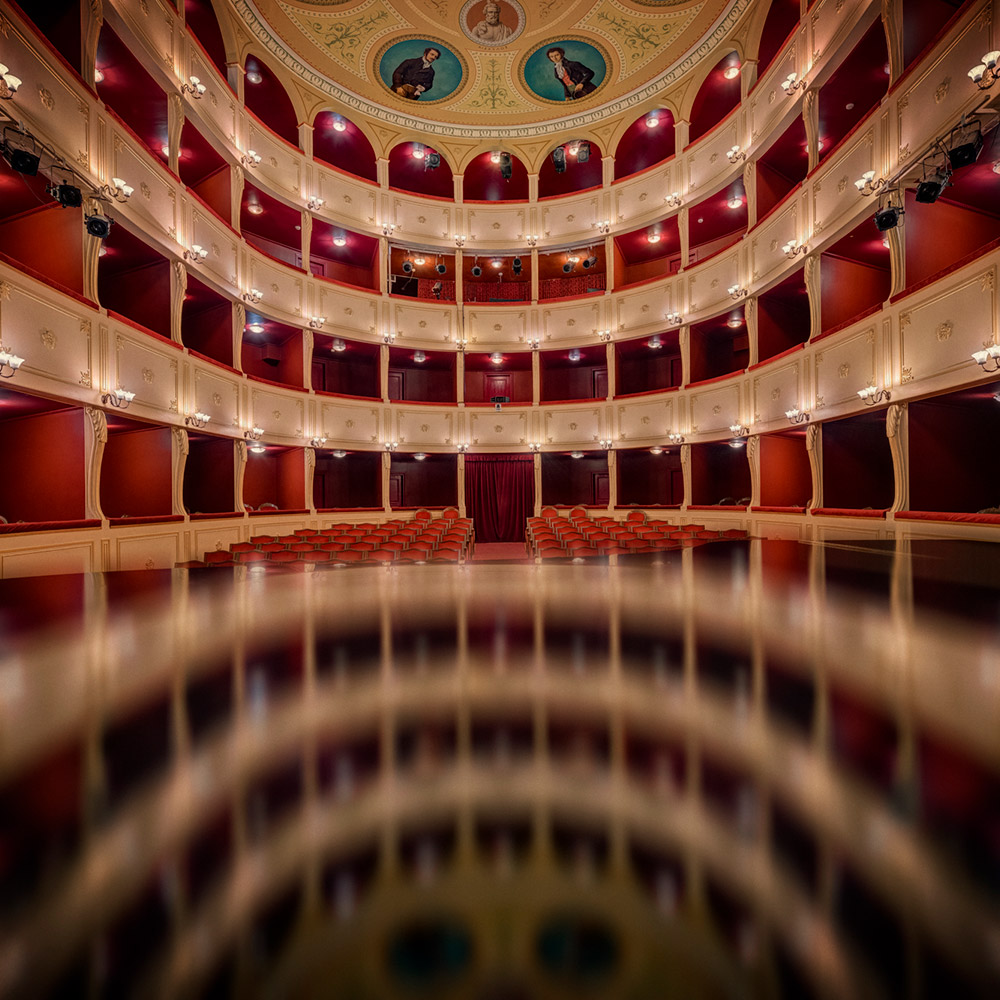
During the 70’s, in a poor reparation attempt, which was left incomplete due to insufficient funds, the theater’s interior was severely altered.
The amateur theatre associations of Syros fought with all possible means to save the theatre, performing in unsafe conditions for almost two decades when the building was falling apart, while their campaign banner “Why have you abandoned me”, hanging on the front facade, communicated their struggles and agony to the whole country.
Answering to the unremitting requests of the local community, the authentic restoration of the theater begun in the 90’s and the theater reopened on July 17, 2000, with Theophrastos Sakellaridis’ Operetta “Vaftistikos”, performed by the “Athens Chamber Opera”. The renovation was realized during Giannis Dekavalla’s mayoral tenure, with funds from the European Union and the Greek Ministry of Culture, based on the designs of an architectural team led by Peter D. Pikionis. The magnificent wall paintings and ceiling murals that embellish the building’s interior were created by Dimitris Fortsas.
